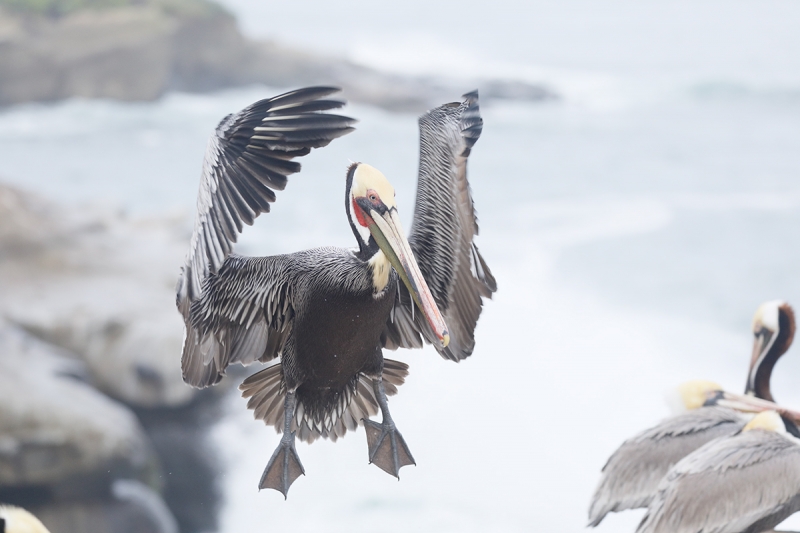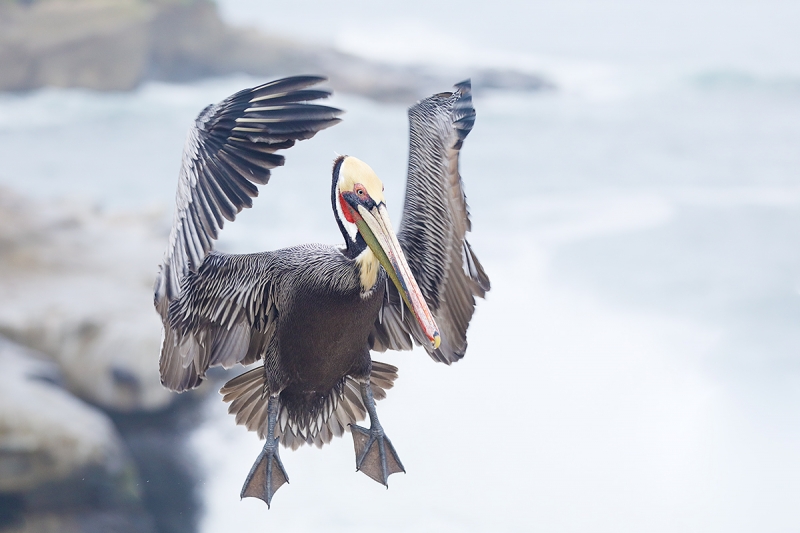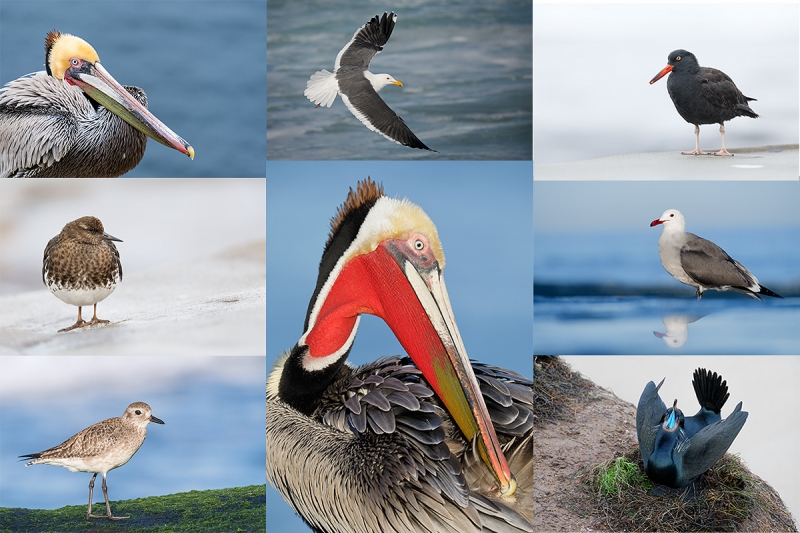Stuff
Nothing too exciting on Sunday. I worked on blog posts, enjoyed another nice, easy, and early 1/2 mile swim, a short nap, and I continued eating well. After spending more than two hours on the phone, I finished reviewing Arash Hazeghi’s update of the The Professional Post Processing Guide so as to reflect the NeatImage V8.2 release. He skillfully re-wrote and perfected three new pages of how-to text. The original guide was based on V7.6. The two versions are quite different. The last and free update will be announced this week.
Tennis Elbow Miracle Cure
I was shocked by how many folks responded to yesterday’s Tennis Elbow Miracle Cure info offer. Even Dr. Dan Holland, a great A.R.T. chiropractor on Long Island, took me up on my offer. If you missed the offer, you can check it out in the previous blog post.
One Mongoose M3.6 Head still in Stock …
For the first time in months, we had Mongoose M3.6 heads in stock. We got our hands on six the other day; three were already accounted for and we sold another two this week … Call Jim at 863-692-0906 weekdays to order the last one. We have ordered more.
The Streak
Just in case you have not been counting, today makes 13 days in a row with a new educational blog post 🙂
Booking.Com
I could not secure the lodging that I needed for the UK Puffins and Gannets IPT in Dunbar, Scotland, so I went from Hotels.Com to Booking.Com and was pleasantly surprised. I found the rooms that I needed with ease at a hotel that was not even on Hotels.Com, and it was a nice hotel that I had seen in person. And the rates were great. If you’d like to give Booking.Com a shot, click here and you will earn a $25 reward.


Gear Questions and Advice
Too many folks attending BAA IPTs and dozens of folks whom I see in the field, and on BPN, are–out of ignorance–using the wrong gear especially when it comes to tripods and more especially, tripod heads… Please know that I am always glad to answer your gear questions via e-mail.
Please Don’t Forget …
As always–and folks have been doing a really great job for a long time now–please remember to use the BAA B&H links for your major and minor gear purchases. For best results, use one of our many product-specific links; after clicking on one of those you can continue shopping with all subsequent purchases invisibly tracked to BAA. Your doing so is always greatly appreciated. Please remember: web orders only. And please remember also that if you are shopping for items that we carry in the BAA Online Store (as noted in red at the close of this post below) we would of course appreciate your business.
|
|
|
This image was created on the 2017 San Diego IPT with the hand held Canon EF 100-400mm f/4.5-5.6L IS II USM lens (at 220mm) and my favorite bird photography camera body, the Canon EOS 5D Mark IV. ISO 1600. Evaluative metering +2 2/3 stops off the light gray sky: 1/640 sec. at f/5.6 in Manual mode. Daylight WB. LensAlign/FocusTune micro-adjustment: +2. Center AF point/Manual selection/AI Servo/Shutter button AF was active at the moment of exposure. The selected AF point fell on the bottom of the middle of the bill, just this side of the plane of the bird’s eye. Brown Pelican landing/original |
Keep or Delete?
As captured, there are several serious problems with this image. The group of cut-off pelicans in the lower right, the pelican head in the lower left, and what looks like an extraneous pelican wing on the frame edge to our left of the landing bird’s right foot are all major distractions to me. Optimizing the image for color and contrast should be straightforward.
Would you keep or delete this image?
100-400 II/5D Mark IV for Flight in LaJolla
The 100-400II is a superb flight lens when working with subjects at relatively short range. Many folks like to zoom out continuously as the bird gets closer. I think that doing this may adversely affect the accuracy of autofocus so I take the opposite approach once I realize that the bird will be too big in the frame. I estimate the focal length that I may need, zoom out quickly, re-acquire focus, and wait for the bird to get big enough in the frame (and then fire off a frame or two). That is exactly what I did here. Zoom lenses can often save the day in situations like this.
|
|
|
This image was created on the 2017 San Diego IPT with the hand held Canon EF 100-400mm f/4.5-5.6L IS II USM lens (at 220mm) and my favorite bird photography camera body, the Canon EOS 5D Mark IV. ISO 1600. Evaluative metering +2 2/3 stops off the light gray sky: 1/640 sec. at f/5.6 in Manual mode. Daylight WB. LensAlign/FocusTune micro-adjustment: +2. Center AF point/Manual selection/AI Servo/Shutter button AF was active at the moment of exposure. The selected AF point fell on the bottom of the middle of the bill, just this side of the plane of the bird’s eye. Brown Pelican landing |
The Image Optimization
While converting the image in DPP 4 I increased the contrast a bit and moved the Shadow slider to the right to deepen the BLACKs. As always, Arash’s noise reduction values were reflected in my (saved) ISO 1600 5D IV recipe. A Level adjust combined with a 30% opacity layer of Auto Contrast brought the image to life. I used the Clone Stamp Tool and the Patch Tool to execute the Divide and Conquer technique to eliminate the distracting pelican parts. I ran my NIK 30-30 recipe on the bird only and sharpened the face only with a Contrast Mask.
Everything above plus tons more is detailed in the new BIRDS AS ART Current Workflow e-Guide (Digital Basics II), an instructional PDF that is sent via e-mail. Learn more and check out the free excerpt in the blog post here Juts so you know, the new e-Guide reflects my Macbook Pro/Photo Mechanic/DPP 4/Photoshop workflow.
You can learn how and why I and other discerning Canon shooters convert nearly all of their Canon digital RAW files in DPP 4 using Canon Digital Photo Professional in the DPP 4 RAW conversion Guide here. And you can learn advanced Quick Masking and advanced Layer Masking techniques in APTATS I & II. You can save $15 by purchasing the pair. Folks can learn sophisticated sharpening and (NeatImage) Noise Reduction techniques in the The Professional Post Processing Guide by Arash Hazeghi and yours truly.
|
|
2017 in San Diego was a very good year …. |
2018 San Diego 4 1/2-DAY BIRDS AS ART IPT: Monday, JAN 15 thru and including the morning session on Friday, JAN 19, 2018: 4 1/2 days: $2099.
Limit: 10: Openings: 4
Meet and Greet at 6:30pm on the evening before the IPT begins; Sunday, Jan 14, 2018.
Join me in San Diego to photograph the spectacular breeding plumage Brown Pelicans with their fire-engine red and olive green bill pouches; Brandt’s (usually nesting and displaying) and Double-crested Cormorants; breeding plumage Ring-necked Duck; other duck species possible including Lesser Scaup, Redhead, Wood Duck and Surf Scoter; a variety of gulls including Western, California, and the gorgeous Heerman’s, all in full breeding plumage; shorebirds including Marbled Godwit, Whimbrel, Willet, Sanderling and Black-bellied Plover; many others possible including Least, Western, and Spotted Sandpiper, Black and Ruddy Turnstone, Semipalmated Plover, and Surfbird; Harbor Seal (depending on the current regulations) and California Sea Lion; and Bird of Paradise flowers. And as you can see by studying the two IPT cards there are some nice bird-scape and landscape opportunities as well. Please note: formerly dependable, both Wood Duck and Marbled Godwit have been declining at their usual locations for the past two years …
|
San Diego offers a wealth of very attractive natural history subjects. With annual visits spanning more than three decades I have lot of experience there…. |
With gorgeous subjects just sitting there waiting to have their pictures taken, photographing the pelicans on the cliffs is about as easy as nature photography gets. With the winds from the east almost every morning there is usually some excellent flight photography. And the pelicans are almost always doing something interesting: preening, scratching, bill pouch cleaning, or squabbling. And then there are those crazy head throws that are thought to be a form of intra-flock communication. You can do most of your photography with an 80- or 100-400 lens …
Did I mention that there are wealth of great birds and natural history subjects in San Diego in winter?
|
Though the pelicans will be the stars of the show on this IPT there will be many other handsome and captivating subjects in wonderful settings. |
The San Diego Details
This IPT will include five 3 1/2 hour morning photo sessions, four 2 1/2 hour afternoon photo sessions, four lunches, and after-lunch image review and Photoshop sessions. To ensure early starts, breakfasts will be your responsibility. Dinners are on your own so that we can get some sleep.
A $599 non-refundable deposit is required to hold your slot for this IPT. You can send a check (made out to “Arthur Morris) to us at BIRDS AS ART, PO Box 7245, Indian Lake Estates, FL, 33855. Or call Jim or Jennifer at the office with a credit card at 863-692-0906. Your balance, payable only by check, will be due on 9/11//2016. If we do not receive your check for the balance on or before the due date we will try to fill your spot from the waiting list. Please print, complete, and sign the form that is linked to here and shoot it to us along with your deposit check. If you register by phone, please print, complete and sign the form as noted above and either mail it to us or e-mail the scan. If you have any questions, please feel free to contact me via e-mail.




Please Remember to use my Affiliate Links and to Visit the New BAA Online Store 🙂
To show your appreciation for my continuing efforts here, we ask, as always, that you get in the habit of using my B&H affiliate links on the right side of the blog for all of your photo and electronics purchases. Please check the availability of all photographic accessories in the New BIRDS AS ART Online Store, especially the Mongoose M3.6 tripod head, Wimberley lens plates, Delkin flash cards and accessories, and LensCoat stuff.
As always, we sell only what I have used, have tested, and can depend on. We will not sell you junk. We know what you need to make creating great images easy and fun. And please remember that I am always glad to answer your gear questions via e-mail.
I would of course appreciate your using our B&H affiliate links for all of your major gear, video, and electronic purchases. For the photographic stuff mentioned in the paragraph above, and for everything else in the new store, we, meaning BAA, would of course greatly appreciate your business. Here is a huge thank you to the many who have been using our links on a regular basis and those who will be visiting the New BIRDS AS ART Online Store as well.
Amazon.com
Those who prefer to support BAA by shopping with Amazon may use the logo link above.
Amazon Canada
Many kind folks from north of the border, eh, have e-mailed stating that they would love to help us out by using one of our affiliate links but that living in Canada and doing so presents numerous problems. Now, they can help us out by using our Amazon Canada affiliate link by starting their searches by clicking here.
Be sure to like and follow BAA on Facebook by clicking on the logo link upper right. Tanks a stack.
Typos
In all blog posts and Bulletins, feel free to e-mail or to leave a comment regarding any typos or errors. Just be right :).



















I would pick the first one, with the pelican in the lower corner.
The other one, it just seems like the pelican is landing into
‘nothingness’. If there was something else there, more rock,
more ocean…anything, I’d pick the second. But the way it
is…#1 for me.
Doug
You wanted to know about the 80d perhaps vs 7d2. I have both. The 80d has the better, newer Canon sensor. It has almost the same af options as the 7d2 without I think Canon calls them af classes (a big omission in my opinion). It is somewhat slower than the 7d2. It has live view with dpaf which means when using live view one does not have to do lens micro adjustments (a big plus for me.). But, if the dpaf is the same as in the m5, the af sensors are not cross type only vertical. The 80d is somewhat lighter and smaller. When shooting sports or bif I always use my 7d2. Before I bought my m5 I carried my 80d everywhere I went. I have a bad back, I hike almost every day and I am getting old (73) so the m5 works for me (small and pretty lite) for everything other than for moving objects so my 80d is not used much anymore. The m5 and 80d have about (maybe the same) sensor. The m5 is not: a sports camera, bif flight camera, low light camera, flash camera and the af options are limited and not as easy to use as say the 7d2 (some will disagree), but for hiking (landscape), flowers, street photography, etc for someone who does not make a living selling images who is old and grey, it is a fine tool. By the way, the m5 can use all Canon lens with an adapter.
Nice job and a beautiful shot. If it were for PSA completion, a square crop eliminating the bird on the lower right and a little on the left would clean up the picture. The composition wouldn’t be the best but certainly better than the original with all of the distractions.
Thanks Jerry. As presented, today’s image would not be eligible for most contests as it would violate their digital restrictions guidelines.
with love, artie